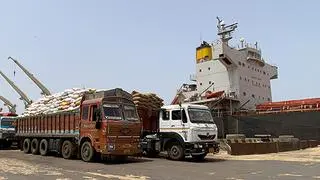The construction industry has witnessed phenomenal growth in the last decade, driven by increased spending in infrastructure. Two or three years in the last decade saw a peaking of project awards.
The first surge occurred in 2001-02, driven by NHAI’s activity in the roads sector. This drove some of the construction companies that were in the revenue range of Rs 500- 1,000 crore to enter the fast lane of growth. Similarly, around 2006-07, another set of companies around the same revenue range (Rs 500-1,000 crore) witnessed fast growth.
Most of these companies performed well till they grew to a size of Rs 3,000 crore in revenue. A common trend across the industry is the underperformance of construction companies after crossing Rs 3,000–3,500 crore in revenue. Thereafter, the companies got stuck with high levels of debt, high working capital and reduced profitability.
POOR SYSTEMS
One of the key factors that contributed to this performance is failure to adapt the organisation’s structure, systems and processes to the increased scale of operations. Companies such as L&T that have invested consistently in building system-driven organisations have been able to manage growth successfully. Most other construction companies have struggled to move from a ‘key man’ driven structure to a system-driven organisation that can support growth.
A few areas that come under strain with increased scale of operations are illustrated here:
Estimation : While reasonable amount of time is invested in costing for raw materials and labour, little effort is made in risk appraisal and contract appreciation.When an organisation is small, the ‘key man’/promoter is able to understand the risks better by virtue of closer involvement at the bid stage. With increased scale, costing and risk assessment are delegated down to the managers in the estimation department, and most often the final review is focused only on costing, and less on review of risks.
TOO BIG TO MANAGE
Gaps in appreciation of risk have led to many companies ending up in situations of ‘winners curse’.
Project Monitoring: Project handover (from estimation team to the execution team) used to be a concern area in the early stage of growth for most companies. Many companies have improved their performance on this. The bottleneck has now shifted to the process followed for project planning and monitoring.
A common issue seen across companies is the use of the project plan for tracking turnover targets, rather than physical completion of the project. Monitoring is also focused on tracking turnover (planned vs. delivery).
This process of planning and monitoring works fine till the project reaches around, say, 60-65 per cent of its value, but has an adverse effect on both working capital levels and overall project timelines.
Consider the following situation: A 15-km pipeline project for which land is available for only 3 km. In order to meet the turnover plan, the Project Manager procures pipes for 10 km, as the contract allowed billing up to 60 per cent of value upon procurement. He was able to meet the turnover targets initially, but this action led to an adverse impact on working capital levels, when the land acquisition got delayed.
There are multiple areas for improvement in project planning. For example ‘externalities’ (such as availability of clearances, land, work front, etc) are common causes for delay of projects in India. Only a few companies identify externalities in their activities list in the project plan. Resource planning and levelling is another area where there is significant scope for improvement.
Documentation: With increased scale of operations and complexity in projects, proper and standardised documentation is important. It is observed that even among some of the ISO-certified companies, the quality of documentation varies across different project sites and it usually depends on the attention given by the project manager.
Change orders, suspension of work, churn in senior level employees at project site, etc., are common in projects. Absence of proper documentation can impact project timelines, working capital requirements and even profitability for many contractors.
Failing to improve systems and processes has impaired growth and financial performance for many contractors as they move to an increased scale of operations. Improvement opportunities exist in processes across all functions.
Market slowdown is an ideal time to review internal processes, as senior managers can devote time to deliberate and would also be more amenable to accepting changes. Investments in systems and processes can go a long way in preparing the company to ride the next wave of growth.
(The authors are General Manager – Advisory, Feedback Infra and Senior manager -Advisory, Feedback Infra, respectively.)








Comments
Comments have to be in English, and in full sentences. They cannot be abusive or personal. Please abide by our community guidelines for posting your comments.
We have migrated to a new commenting platform. If you are already a registered user of TheHindu Businessline and logged in, you may continue to engage with our articles. If you do not have an account please register and login to post comments. Users can access their older comments by logging into their accounts on Vuukle.